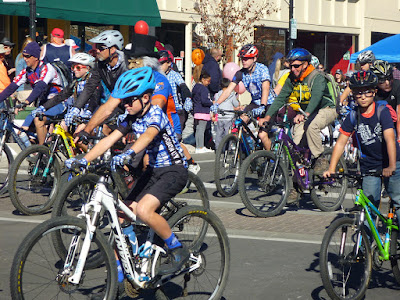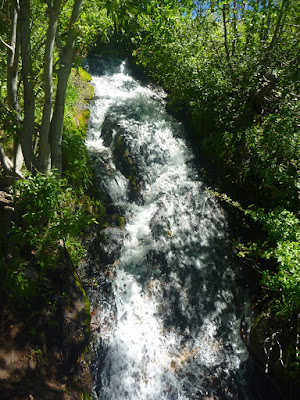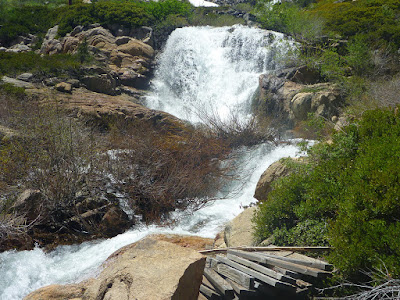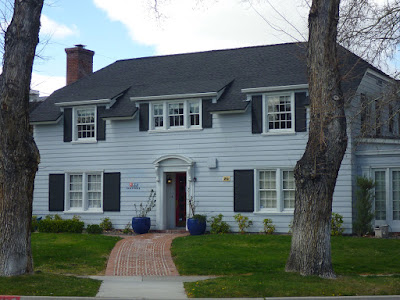 |
| The Basque Sheepherder Monument with UNR's hillside letter “N” in the background |
The
Basque Sheepherder Monument is located northwest of the University of Reno, Nevada, surrounded by a few trees and sagebrush next to the Rancho San Rafael disc golf course. This is where the hilly landscape of the lower Peavine area with its many hiking and mountain biking trails merges with Reno neighborhoods. The monument platform offers fantastic views of the Truckee Meadows and the slopes of the Peavine mountain including the white hillside-letter “N”.
The 23-feet tall
bronze sculpture is the work of the Basque sculptor
Nestor Basterretxea, who gave the monument the title “
Bakardade,” or “
Solitude” [1,2]. It takes an attention-paying view of the relatively abstract bronze column to see what it depicts. The sculpture shows a shepherd carrying a lamb over his shoulder under a full moon.
 |
| Map of the Unites States indicating Basque Settlements |
The first generation of
Basque immigrants to the United States were mostly sheepherds. The bronze map of the United States at the base of the sculpture depicts areas in which Basques settled and their descendents live.
Basque historic sites are found in various and remote places throughout the west-American landscape; for example at
Whiskey Creek Camp, a former Basque sheepherder's camp in the Branite Chief Wilderness west of the
Five Lakes basin.
Basques are
diaspora people living in may parts of the globe. Even the Basque Country, their
homeland in northeast Spain and southwest France, may be considered as part of the diaspora, as the out-of-Asia theory is supported by scientific evidence. On the back cover of the book by
Joxe Mallea-Olaetxe in the series “Images of America“ with the title “
The Basques of Reno and the Northeastern Sierra” we read:
Thanks to DNA research, the Basque of the Pyrenees Mountains are no longer the “mystery people.” Thirty-five thousand years ago, they traveled from Central Asia to Western Europe, where they still live, speaking a language unlike any other. After helping Columbus discover America, Basques spread out from the Pampas to California and beyond into the Sierra and Reno, Nevada.
 |
| New plaques with names of Basque sheepherders |
The original
bronze plaques at the monument, tributing to the
story of Basque emigration to the Unites States, were stolen a few years ago. The plaques have been reconstructed and are now replaced by steel plaques thanks to support from the Washoe County Open Space and Regional Parks Commission [2].
Getting to The National Monument To The Basque Sheepherder
Take exit 13 on Interstate 80 in Reno and head north on Virginia Street. Pass the intersection of Virginia street and North McCarran Blvd. and then turn left (west) to get to the parking area at the
Reno Sports Complex (
2975 North Virginia Street). Park for free. Find the trail map kiosk in the northwest corner of the parking area, where the disc golfers enter “their” territory. A short, northwest-bound trail is your access to the monument platform.
Alternately, if you like to combine strolling and hiking, walk through the
Wilbur D. May Arboretum toward Herman's Pond and further to the McCarran underpass. Pass through and hike uphill between the grove and the disc golf sites.
Continue exploring Reno-Tahoe.
References and more to explore
[1] Joxe Mallea-Olaetxe:
The Basques of Reno and the Northeastern Sierra.
Arcadia Publishing, Charleston, South Carolina,
2009.
[2]
Basque Sheepherder Monument: Restoration [
www.nabasque.org/Astero/monument.htm].
























